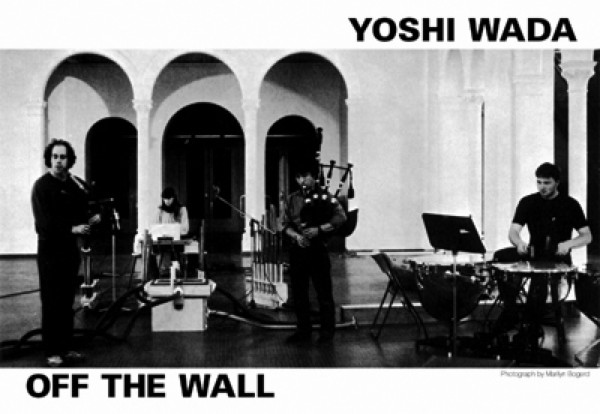> Studies > early works of "noise" music > œuvres racines de la musique noise
(AROUND) LA MONTE YOUNG |
back / retour : — La Monte Young Poem — La Monte Young Papers Writings —
YOSHI WADA(Edit)
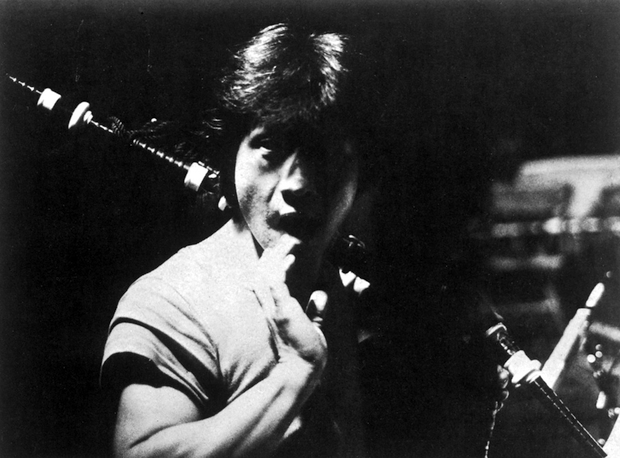 | "In the early 70s, I studied with La Monte Young, which was more like electronic music. Later on, Pandit Pran Nath came to New York. What he taught me was to be in tune and about intonation. I would sing myself with a tambura and just regular a cappella singing and practicing. I did that around 1973 and 1974, and I finally developed my own style of singing. The turning point around that time was that I went to an Ethnic Music Expo in Queens, New York. There were Macedonian women singing. It was a small group, and they were singing in unison and in a very high pitch. It was a really piercing and traveling sound. I couldn't understand the words, but it didn't matter anyway about the meaning of the words. What impressed me was that they weren't trained musicians. Rather, they were likefarmers and peasants in the region. The meaning came from everyday life. The Macedonian women singers sometimes sing farming tunes, something they have when they're working. I guess they were happy about singing and working at the same time. I wasn't working and singing, but it was a great feeling as a group activity. You're in tune with other people, singing. After I heard this singing, I organized a three-man choir. Prior to that, we had a Macedonian woman singer showing us what to sing. After that, we developed our singing in unison. It was all improvisation. It wasn't easy to synchronize because we weren't trained singers ourselves, but slowly we got into it. This was based on my own notation, but still it was improvised completely." (From an interview by Marc Masters and Grayson Currin, Pitchfork, 8 March 2013) |
 | "That started in the earlier 70s. I was actually in construction, doing plumbing work to earn money. One day, I picked up a pipe and blew it, and it made an interesting sound. I had to get a much larger size pipes and begin experimenting. It was an unknown thing. I ended up with gigantic pipe instruments called Earth Horns. It was a really low pitch, a very extreme range, like a sheep demon being created. It was 30 to 60 Hz. I organized an ensemble. It was quite interesting, because nobody had that kind of idea of building such instruments. The title of the piece was Earth Horns With Electronic Drone. Some of them I had to give up because they were so heavy— steel pipes, after all. At one point, I couldn't carry them around anymore, so I stopped. The Emily Harvey Foundation in New York has a couple of the instruments, and I have a couple of them in San Francisco, too. In 2009, I did perform at the Emily Harvey Foundation with the Earth Horns." (From an interview by Marc Masters and Grayson Currin, Pitchfork, 8 March 2013) |
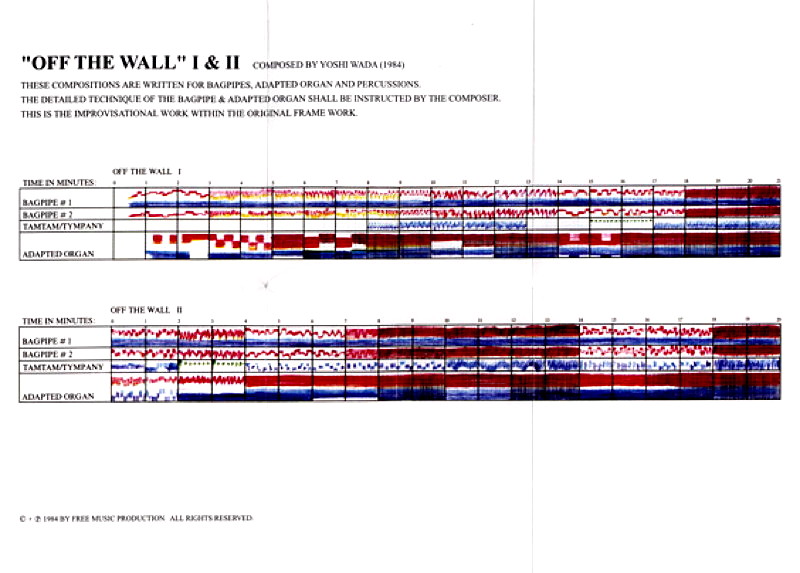
Yoshi Wada Die Konsonanten Pfeifen from "Off the Wall" 1984 from Das Real Kellzo on Vimeo.
Yoshi Wada (bagpipes); Wayne Hankin (bagpipes); Marilyn Bogerd (adapted organ); Andreas Schmidt-Neri (percussions/timpani), recorded May 1984, Berlin.
On this album you can listen to the sounds of a five-octave range homemade organ pipe, connected with a central machine, spreading the sound all over the room, where the music is played, this is a loud and nearly metaphysical minimalist experience.
"...a bagpiping masterpiece which - similar to his previous release - celebrates and emphasises the bouncing of sound off a solid force: the physical nature of sound reverberating in a specialised environment. And let me say folks, it's an experience that transfers to vinyl pretty damn effectively - crank up the volume to the nine o'clock position and you'll find out what I mean. He built these unbelievable huge bellows which you pump with your feet to play the pipes, whose dimensions were more on the order of organ pipes than regular chanters. You wouldn't want to meet the Scottish chieftain who could actually lift such an instrument. This record is not as frightening as Crocodile, in fact I find it quite soothing, but the uninitiated should prepare for the full force of a massed angry wasp attack." - ED PINSENT
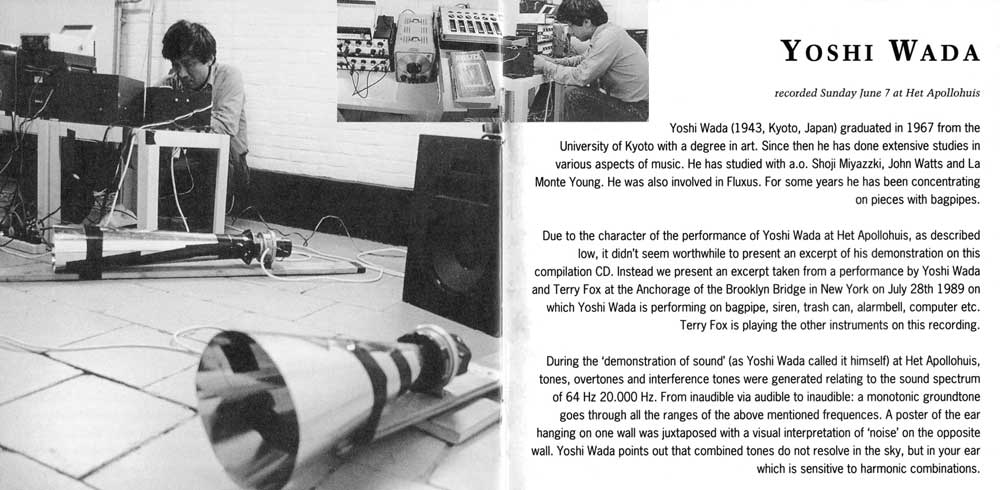
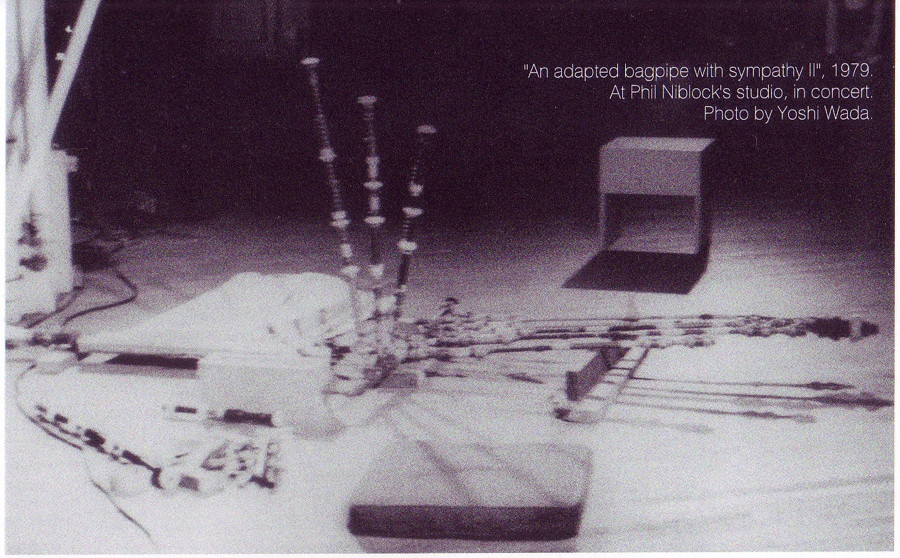
VIDEOS(Edit)
AV Festival 12: Yoshi Wada: The Lament of John Cage from AV Festival on Vimeo.
AV Festival 12: Yoshi Wada: Sound Ship upon Tyne Live from AV Festival on Vimeo.
AV Festival 12: Yoshi Wada: Sound Ship upon Tyne: Sequence 2 from AV Festival on Vimeo.
Biography
Yoshi Wada is a sound artist and musician born in Kyoto, Japan. He studied sculpture at the Kyoto City University, and then moved to New York in the late 1960s. Wada joined the Fluxus cultural movement in 1968 after meeting its founder George Maciunas, becoming a key figure on the Japanese Fluxus scene producing work for Flux Box, Flux Mass, and Fluxus concerts.
In New York he spent time studying composition and electronic music with La Monte Young and singing with the North Indian vocalist Pandit Pran Nath. These studies extended his interest in non-western tuning systems. In 1979-80, he constructed a series of large, handmade bagpipe instruments. His later works are entirely scored pieces for portable bagpipes, pipe chanter and percussion. During a year-long DAAD fellowship in Berlin in 1983, Wada began fabrication of an adapted pipe organ, combined with other instruments, which resulted in his major works Off the Wall and The Appointed Cloud. His work is released on the Japanese record label EM Records/Omega Point.
His work has been performed at The Kitchen, New York; New Music in America, New York; Whitney Biennial, New York; Akademie der Kunste, Berlin; Sydney Biennial, Australia; Festival d’Automne, Paris; Kraak Festival, Belgium. His sound installations have been exhibited at Emily Harvey Gallery, New York; Whitney Museum of Art, New York; PSI, New York; and Venice Biennial.

